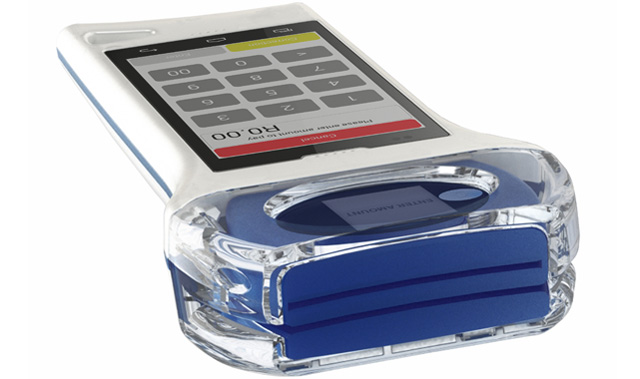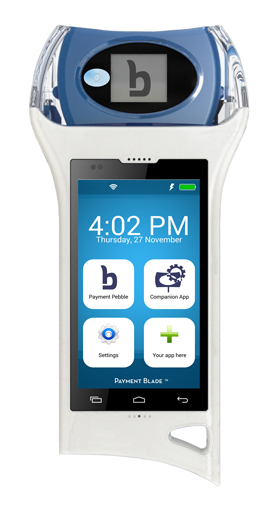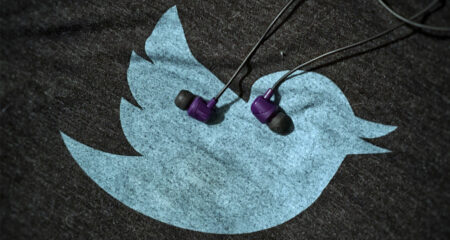
Stafford Masie, the South African technology entrepreneur behind the Payment Pebble, introduced earlier this year by Absa, will on Monday takes the wraps off a radical new design of the mobile point-of-sale (M-POS) system he developed in South Africa with a team of technologists. Instead of merchants having to use a third-party smartphone, the new device, called the Payment Blade, integrates a full smartphone into its design.
Masie believes the South African-designed and -developed product will help Thumbzup, his company that developed it, expand much more quickly, including into new international markets. He claims there is no M-POS system like it anywhere in the world and says it’s the cheapest full-solution card-acceptance device that’s been built anywhere.
The Pebble component of the Blade is fully designed and manfactured in South Africa. The smartphone component of the device is designed locally and outsourced to a Chinese manfacturer, with the final product assembled in South Africa.
“What the Kindle did for reading, the Blade does for payments,” Masie says. “What the iPhone did for mobile phones, the Blade does for the card-acceptance device market.”
 Merchants won’t have to insert a Sim into the device. Rather, the banks that issue it to them will negotiate an APN (access point name) with mobile operators, allowing them to offer access without users even having to know they’re using mobile data. Amazon uses the same technology with the 3G version of its Kindle e-reader.
Merchants won’t have to insert a Sim into the device. Rather, the banks that issue it to them will negotiate an APN (access point name) with mobile operators, allowing them to offer access without users even having to know they’re using mobile data. Amazon uses the same technology with the 3G version of its Kindle e-reader.
The Payment Blade will be introduced in South Africa through Absa and in Australia through banking group ANZ, with which Thumbzup recently concluded a distribution deal. The first units will go on sale in the first quarter of 2015. Masie says banks should be able to offer the Payment Blade for less than R80/month.
He is also at an advanced stage of discussions with a large financial services group in South America, which he declines to name, and is keen to expand into Japan and into the competitive US market soon.
Thumbzup’s Payment Pebble is sometimes compared to an M-POS solution developed by US company Square, co-founded by Twitter co-founder Jack Dorsey. Masie says he is keen to work with Square as Thumbzup eyes its entry into the American market. “I see Square as an amazing partner for us, potentially,” he says. “Our device fits their model perfectly. They would be a really cool customer to have and they probably get us more than anyone else.”
There are two versions of the Payment Blade: Blade Foundation and Blade Enterprise. The latter includes a 5-megapixel camera, allowing retailers, for example, to photograph and catalogue their products using a built-in barcode scanner, and has a number of value-added features for business users, including the ability to receive voice calls and to make calls to a “whitelist” of numbers.
The device runs a stripped-down and customised version of Google’s Android operating system and has a purpose-built user interface called Blade UI. An application programming interface will allow third-party developers to build apps for the Payment Blade. Users can keep track of gratuities, link payments to invoices and do cash-outs for drivers who use it for deliveries.
TechCentral editor Duncan McLeod chats to Stafford Masie about the Payment Blade:
Masie says Apple Pay, Apple’s new mobile payments system, is taking the wrong approach. “Apple Pay is all about tokenising the card. But cards work really, really well. They’re really powerful because they don’t have a battery and they work all over the world. The future is in tokenising the merchant, not the card.”
Ultimately, Masie says he’d like to see the Payment Blade in people’s homes. “When I buy a plane ticket in my lounge, I want to do it through Blade,” he says. “The blade tokenises merchants. This in a consumer’s hands is an extremely powerful proposition. And we’re at a price point now where we can put this in everyone’s homes.”
The Payment Blade could prove popular for e-commerce merchants, too, Masie predicts. Online shoppers could use it to pay for their orders when their goods are delivered without having to use cash, which introduces risk. The device can also be used to accept specific payments that are entered into the system before a driver is sent out to collect them. — (c) 2014 NewsCentral Media




